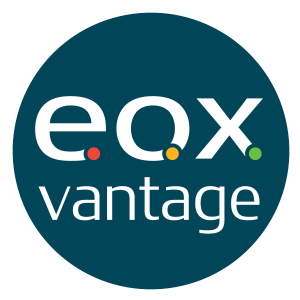Article published in CHART Exchange | October 2020 issue | Author: Mike Fieseler
It's all about speed - speed to market for program development and implementation, faster turnarounds on queries from prospects and in delivering policies, quicker responsiveness to grow customer satisfaction and retention. Insurers know they must increase their speed, but where do these improvements come from?

One way is to work faster, smarter and better by revamping workflows. Analyzing and mapping existing workflows will lead you to understand how to streamline for more efficient workways. From this point you can transition them from manual, error-prone, people-performed processes to automated ones for business-transforming speed and accuracy improvements.
Refining and automating inefficient workflows and time-consuming processes is another solution for picking up speed and gaining productivity in basic business functions, team member throughput and ultimately operations across the entire organization. To illustrate the benefits of automation, let's take a look at how EOX Vantage helped a client that was falling behind in the race.
Vicencia & Buckley is a brokerage wing of HUB International, an intermediary between a specialty insurer and their clients: Scuba diving instructors. When we started working with them, their policy processes were not conducive to an agile, speed-optimized business model.
Their legacy process was for applicants to fill out a form on their website that got converted to text and emailed to a CSR. The CSR copied the data into a system and had to contact applicants for any missing data, an inefficient and time-consuming workflow. In a different system, the CSR checked an outside database if the applicant was certified by PADI, the leading Scuba training organization. But they still weren't done! The CSR also had to process payment by contacting the applicant for credit card information, which was insecure and not compliant with PCI standards. Meanwhile, customers would have to contact a CSR for endorsements, COIs or other changes.

Numerous disadvantages and deficiencies combined here to create operational breakdowns: foremost the duplication of efforts and switching between multiple systems. Not to mention the outdated system was unreliable and prone to crashing when more than one application was handled at a time, and could not be worked on remotely without a VPN connection. This all led to slow policy turnarounds, multiple inefficiencies throughout the whole process and complex, convoluted workflows due to back-end workarounds.
After examining the parameters, our objective became to build an online self-service Scuba insurance procurement platform aligned with HUB's digital strategy.
Our design included developing the following components. Taken as a whole, you might have seen this streamlined approach that promotes efficient data collection and eliminates redundant data inputs referred to as "straight-through processing."
- a portal for agents (/CSRs) to respond to new applicants, search and manage all existing policies, and verify PADI certification in one platform
- a portal for insureds that includes a way to self-serve for endorsements and renewals, taking care of a major pain point
- dynamic forms to simplify application submission and ensure complete, accurate data by not making the customer fill in all information and any gaps
- risk rating engine
- payment gateway to enable secure collections and decrease collection times to speed up the payment cycle
- document viewer for an easy way to see attachments, certifications, etc.
Automating many aspects of the problematic program practices and bringing them all under one platform also allowed us to easily integrate the system with PADI and a leading payment services provider. The new system has paid off handsomely.
Looking at the numbers, in 2019 it took HUB 1,781 hours to complete data entry alone for nearly 8,000 policies - not counting going back and forth with prospects for information, etc., which surely added many more hours. During the peak U.S. season (summer), a staff of four worked eight to ten hours per day strictly on data entry, and in some cases, they even needed to pull staff from other departments. These team members included executives and others whose time and efforts could have been more effectively used in other endeavors to help the business more optimally.
Our new system is tracking to provide a 70% decrease in manual data entry time and an 80% faster policy turnaround time. These equate to an estimated savings of tens of thousands of dollars a year. Perhaps even better, the ability to process more applicants and service more people in a faster and better fashion should increase customer satisfaction and sales.
In addition, the system is now much more reliable. It's also simpler to use, especially for dispersed team members who can easily connect to the web-based platform.
An overlooked time-saving feature of automation is that it can transform your operation into a 24/7 shop - with processes going on around the clock and outside of the normal business hours of team members who would conduct the same actions - to accommodate the many people who want to shop for things like insurance outside traditional business hours or on weekends. Such significant time savings lead to smoother operations, greater customer satisfaction and more loyal employees with less turnover. Team members who used to do the time-intensive procedures can be retrained and repurposed to perform more value-added activities for the business than data entry and the like.
Automation is becoming more accessible and more affordable for businesses of all sizes and resources. It's attainable even with a limited budget and constrained resources. With competition fiercer than ever and the pandemic stretching already strained resources, it's time to give automation a try.



